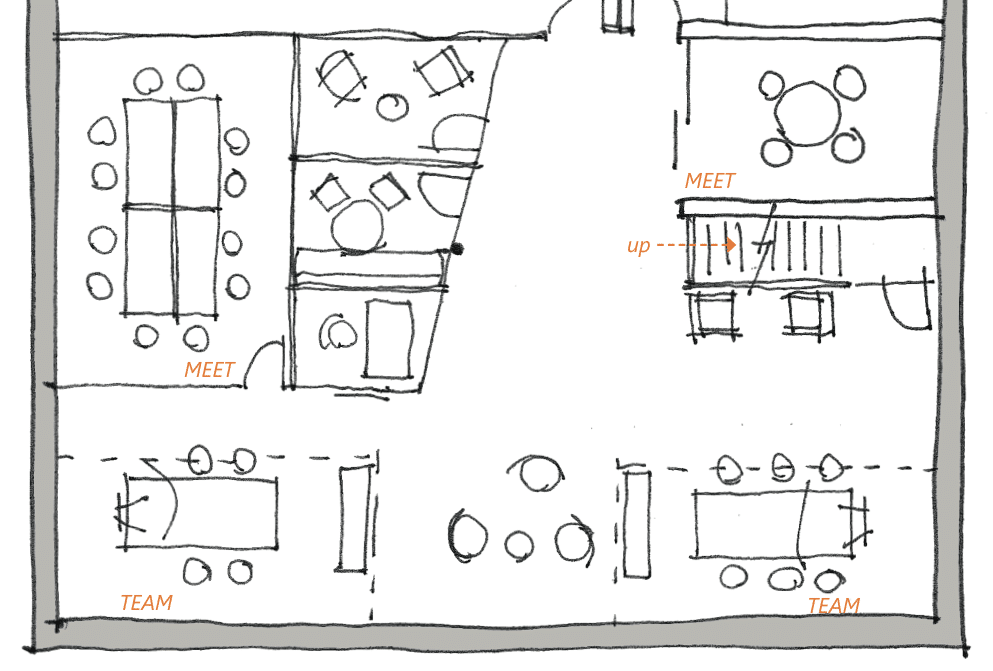Space matters. And Atomic Object Grand Rapids is at the front end of an exciting workplace redesign to enable the activity in our old building.
Recently, my colleague Matt Fletcher pointed me to a great book: Make Space: How to Set the Stage for Creative Collaboration by Scott Doorley and Scott Witthoft. This book is a wealth of creative workplace design ideas and is organized around “Tools,” “Situations,” “Design Template,” “Space Studies,” and “Insights.”
Along with lots of nuts-and-bolts, DIY design ideas, the book offers excellent perspectives on some of the important lessons of workplace design. Here are the “Insights” that most resonated with me as I head into the redesign of AO Grand Rapids:
Platform vs Application
In software, there is a distinction between a platform and an application. Applications support specific tasks; platforms are environments built to run applications. Think of space as a platform for creative collaboration.Build Empathy by Exploring All Angles.
Physically exploring the paths, the sight lines, and obstacles by stepping through the space with an intent in mind — finding the bathroom, giving a tour, heading to the kitchen, shaking off your umbrella or parking your bike — is a non-obvious but fruitful approach to designing the stories for your space.Enter on Action
Have visitors enter an active (rather than empty) space to give them an immediate feel for the culture of the place.
Help People Cope with Change.
Space designers change everything that a person experiences — in three dimensions, no less. While change is exciting for some, it is positively terrifying for others. As shiny and hopeful as it is, a new space threatens status and arouses nostalgia for the way things were.
Powers of Ten*
When observing and designing a space, consider it in multiple scales, from the level of an individual’s hands to the scope of an entire neighborhood… examine each aspect of the situation from different levels of granularity.
Patina Gives Permission.
When designing a creative environment, default to “studio” or “workshop,” not “office.” The best creative spaces are highly resolved (thoughtful), but not highly refined (precious).
Beware of Whiz-Bang.
Innovation is all about the new, the possible. We love novel solutions. Articulating arms, convertible furniture and digitally-augmented work surfaces are cool, exciting and enticing. Given equivalent (or near equivalent) performance, the more elegant solution is the one that has the fewest moving parts. So says Ockham, and so say we sometimes.
*Powers of Ten is a 1968 documentary film by Charles and Ray Eames.

